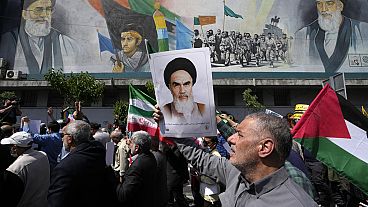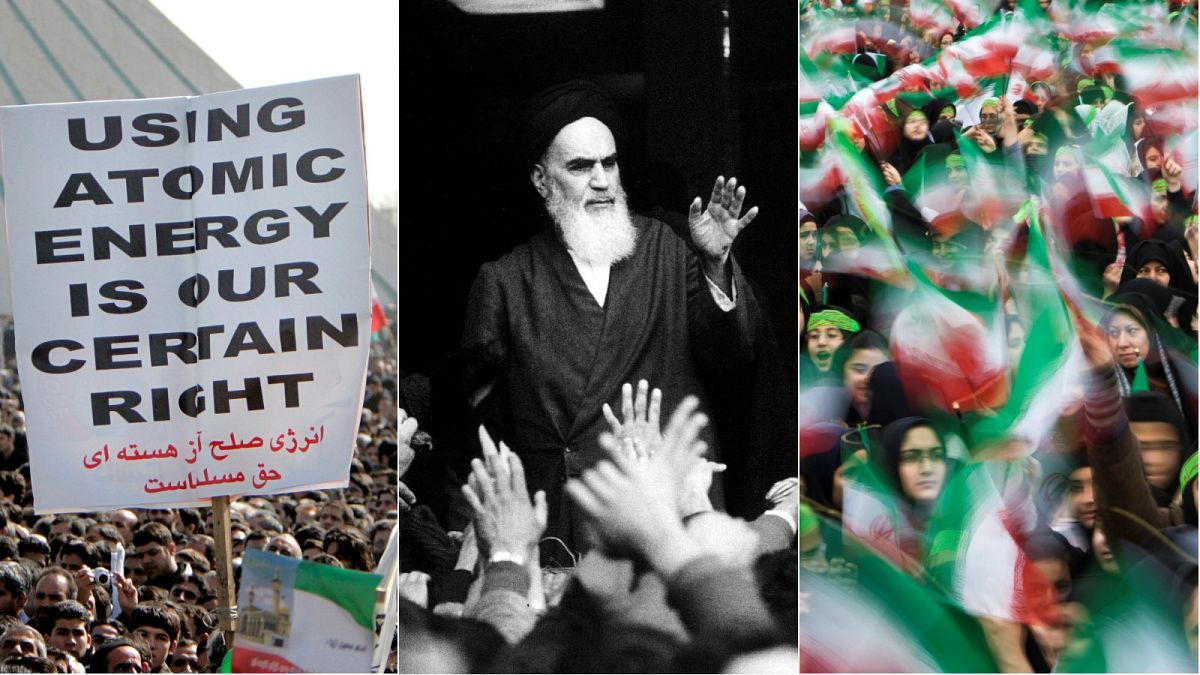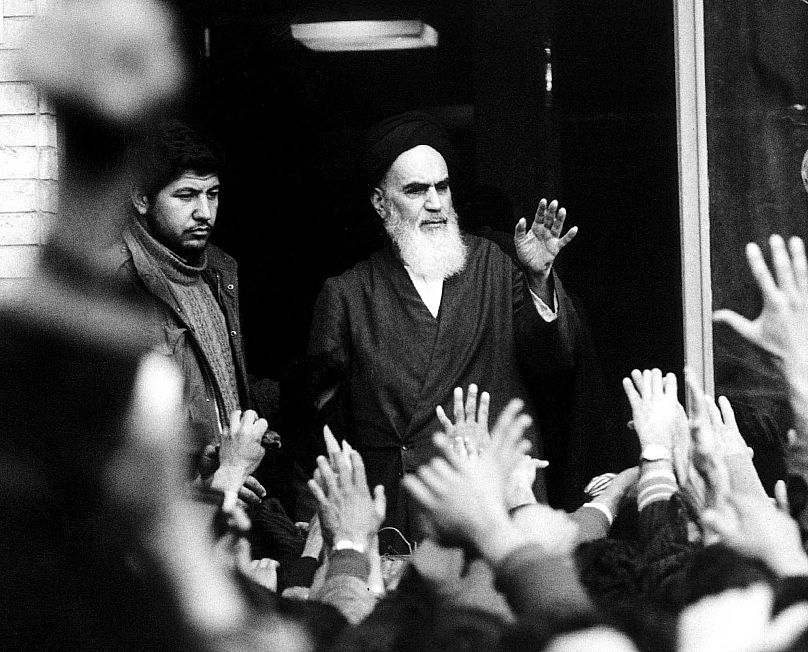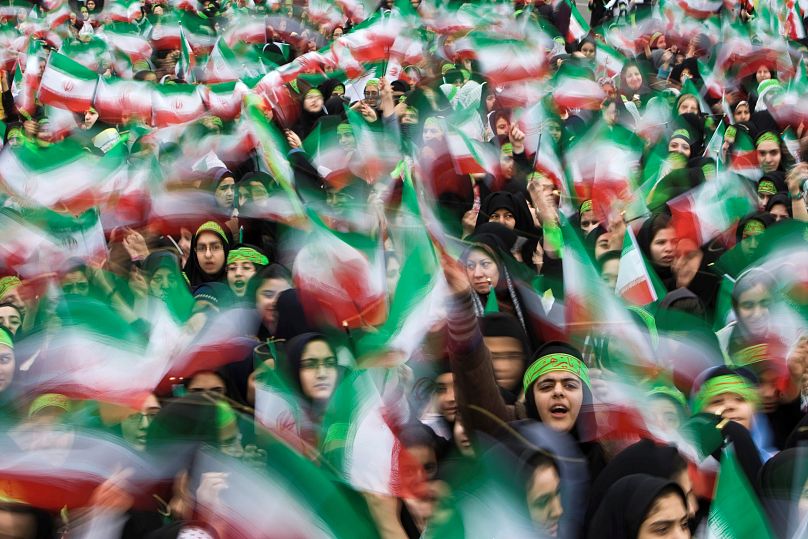On the 40th anniversary of the Islamic Revolution, Euronews speaks to two experts about the history of the uprising, its winners and losers and how it has shaped the world.
As Iran marks the 40th anniversary of its Islamic Revolution, Euronews spoke to two leading experts on Iranian history and politics about how it came to be, whether the pledges of Supreme Leader Ayatollah Ruhollah Khomeini have been fulfilled and how it has changed the country’s position in the world.
How did the 1979 revolution come to be?
Maziyar Ghiabi, a lecturer in modern Iranian history at the University of Oxford, said it was important to understand that the revolution “did not happen out of nowhere”.
During the 20th century, he said, Iran experienced numerous popular uprisings, which had brought an end to absolute monarchical rule and led to the creation of parliament, among other things.
“By the end of 1970s large portions of the Iranian population perceived the Shah as a ruler detached from people's lives, increasingly autocratic and at the same time lacche of the United States. Shah's massive expenditure in military equipment and the uncompromising one-man rule buttressed the generalised discontent within the population,” he explained.
He noted that this was also instrumental in making the uprising a broad social movement with participation from a broad range of political and social groups.
“From the guerrillas of the left to the conservative Islamists, from the Orthodox Soviet Communist Party to the Liberals of the National Front and the Shi'a clergy, all pushed for the overthrow of the Pahlavi regime.”
Arshin Adib-Moghaddam, a professor at SOAS, University of London who has written several books on Iranian politics, agreed that the “mass movement” was vital to the success of the revolution.
“Ayatollah Khomeini became the point of fixation of the masses… But he was the result of the people's wishes for total change and not the incubator,” he said.
However, he added, Khomeini's persona did play a vital role in galvanising the movement.
“He had an aura about him, almost Ghandian — of course without the proclivity towards non-violent action.”
Have Khomeini’s promises been fulfilled?
Khomeini maintained some of the promises he made and retracted on others out of political expediency, Ghiabi said.
“The promise of social justice and the establishment of a government attentive to popular demands was fulfilled to a certain degree, given that the revolution had a powerful social effect on a great part of the population especially in the first years after the revolution.”
However, the outbreak of the Iran-Iraq War made the fulfillment of some of his promises almost impossible and led him to tone down others because of the need to support the war effort, he added.
Political repression also meant that many of the forces who took part in the uprising later became “victims of the revolution themselves”.
“What is interesting is that Khomeini's style was ambiguous so he rarely pledged to specific demands but often agreed to look into potential changes if it was in the interest of the new political order,” Ghiabi said.
“Often this resulted in the adoption of policies that were not necessarily in line with what one would expect from an Islamist politician or a cleric.”
Adib-Moghaddam said Khomeini was “plotting irreversible, total change in Iran and beyond” and preached “a utopia of a better tomorrow for Iranians and the ‘oppressed’ of the world.”
But, he stressed, this ideology “created fissures that Iranian society continues to deal with until today.”
Who were the winners and losers?
“The political losers were obvious: The ancien regime of the Shah and its underbelly, the United States, Israel, and the winners were the millions of Iranians who were a part of the movement at least at the time when the revolution triumphed,” Adib-Moghaddam said.
Ghiabi said the revolutionary clergy was the “great winner” of the revolution, while the losers, “apart from the monarchy and the compromised elites, are the leftists and the liberals, who paid a heavy price for their opposition before and after the revolution.”
How has the revolution shaped Iran's position in the world?
“Iran's position in the world has changed dramatically following the Islamic Revolution. All of Iran's allies, such as Saudi Arabia, Israel, and the United States, became suddenly Iran's enemies. And all of Iran's enemies became its allies”, said Ghiabi.
“Iran has remained autonomous and non-aligned in its foreign policy, although it has historically supported countries in the anti-American, anti-imperialist camp, such as Venezuela, Bolivia, and Cuba.
“While Iran is isolated from most Western countries, it has managed to maintain alliances in the region, with Lebanon, Syria, Iraq, Armenia, and friendly relations with countries such as China, India, and Russia,” he said.
Adib-Moghaddam agreed that the country had “totally changed its foreign policy” in the wake of the revolution.
“Today, Iran acts as an independent regional superpower, whereas before it was a dependent actor,” he argued.
And, he said, the future of the country would continue to have global significance.
“The fate of Iran is likely to affect, if not determine the illusive quest for peace in the Middle East and beyond. No one can afford to ignore what is happening in this country.”
Click through the timeline below for more on what happened in February 1979 and the years since:




